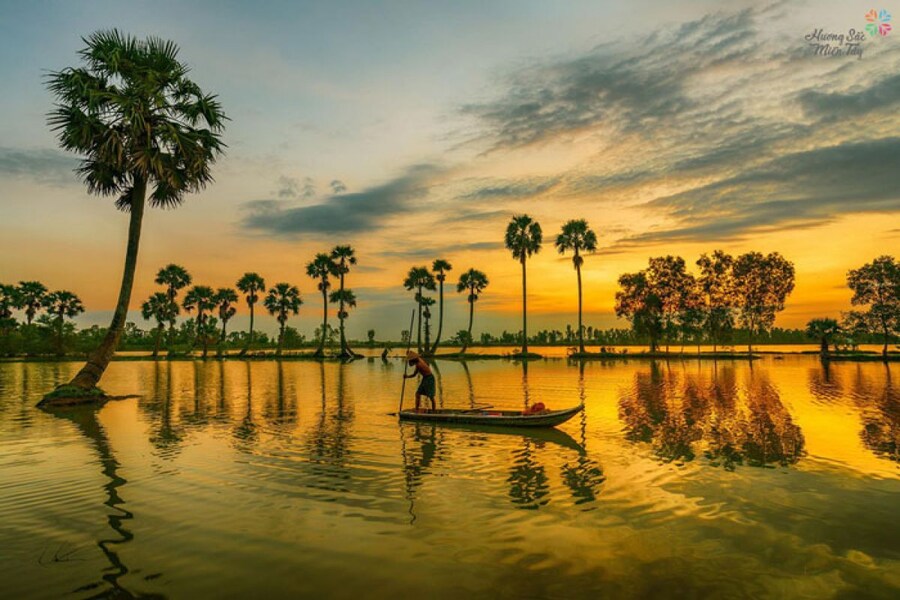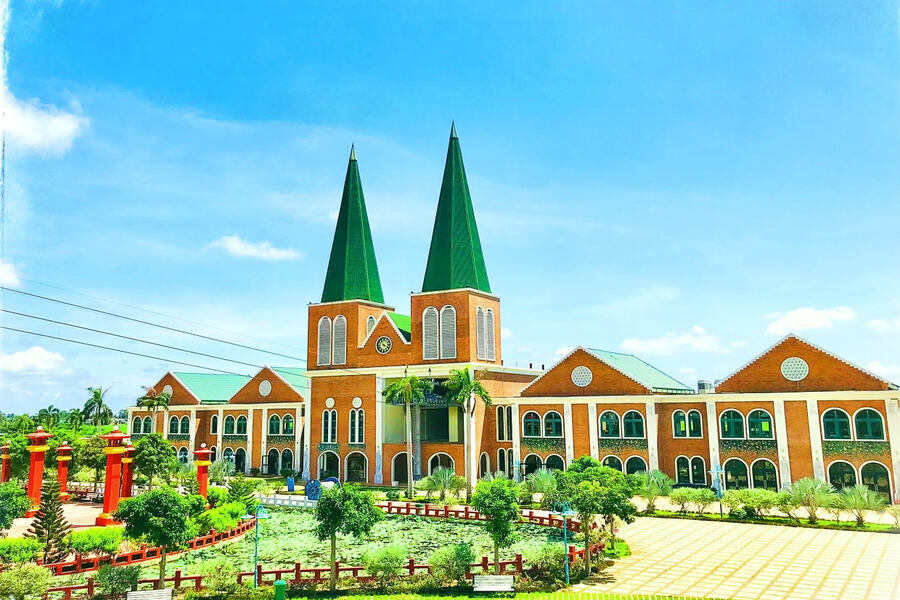An Giang

An Giang is one of three provinces located in the Long Xuyen quadrangle, in the southwest and located on both banks of the Hau River. While the north of this location is the Vietnam - Cambodia border, the remaining three sides of this land border Dong Thap, Kien Giang, and Can Tho. An Giang's special geographical location has brought about a unique blend of culture, religion, architecture and cuisine of the Kinh, Khmer, Cham and Chinese people.

An Giang is endowed by nature with unique features. Source: Crystal Bay
Besides, the province also attracts tourists with rows of palm trees soaring high into the blue sky next to vast lush fields, along with many scenic spots, historical relics, and many impressive check-in points. Join Asia King Travel to visit this region to hear mysterious spiritual stories and famous delicious fish sauce hotpot.
Belonging to the Southwest region, the weather is divided into two distinct seasons: the rainy season and the dry season. The rainy season usually lasts from May to November. Particularly from May to July, the weather is quite cool and pleasant.
More specifically, this time is also the flood season in the West, so it is quite attractive to tourists because those who come here will be able to admire the typical scenery of the year with beauty that is both magical and poetic. The dry season usually starts in December and lasts until the end of April.
Breathtaking scenery of An Giang countryside under the sunset. Source: iVIVU.com
On the other hand, the destination also has a geographical location right near the equator, so it has a typical tropical monsoon climate, hot weather all year round and no winter. Although the weather is quite mild and pleasant, with few storms, the average amount of rain is large - a common characteristic of the climate in regions near the equator. The precious thing is that in any season or weather, this land also possesses own beauty that creates charm for many tourists.
As written above, this place has typical Southern weather with two seasons: rainy season and dry season. With such a non-extreme climate, no matter what time you choose to travel to An Giang, it will be suitable because any season to visit the tourist attractions of Tinh Bien, Chau Doc,... is also beautiful.
Da Phuoc Cham Village is one of the tourist attractions in An Giang Province. Source: Zoom Travel
Getting to An Giang involves traveling to the Mekong Delta region in Southwestern Vietnam. The most common ways to reach this place are by road and water. Here are the primary transportation options:
The nearest major airport to the province is Can Tho International Airport, which is approximately 150 kilometers east of Chau Doc, the capital city of An Giang. From Can Tho, you can hire a taxi or take a bus to reach this destination.
If you prefer a more private and flexible mode of transportation, you can hire a car or use your vehicle to drive to this tourist attraction. The road network is well-developed and the journey from Ho Chi Minh City typically takes around 5 - 6 hours.
Ta Pa Field is beautiful when viewed from above. Source: Sakos.vn
Given its location in the Mekong Delta, boat travel is a unique and scenic option. You can take a boat from Can Tho or other nearby Mekong Delta provinces to Chau Doc. The journey along the Mekong River allows you to enjoy the picturesque landscapes of the delta.
Read more: Southern Vietnam Tour 10 days: Highlights Exploration
Hotels and motels in this place are mainly concentrated in Sam Mountain, Chau Doc and Long Xuyen market areas. Hotels and motels in the Sam Mountain area are quite expensive, usually only pilgrims stay.

Hotels and motels in this place are mainly concentrated in Sam Mountain. Source: dulichviet
If you travel, you should stay in the Chau Doc market area, for convenient access to attractions during the day as well as entertainment and dining in the evening. Victoria Chau Doc Hotel located on the banks of Hau River or Victoria Nui Sam Lodge on Sam Mountain, Chau Doc are suggestions for tourists who want a luxurious vacation.
Coming to An Giang, visitors should not forget to enjoy specialties that are only delicious when eaten locally such as Chau Doc fish vermicelli, Tri Ton beef porridge, grilled chicken with O Thum leaves, Long Xuyen broken rice, palmyra beefcake, Siamese sticky rice, durian salad, rice with ca pua of the Cham people...
During the floating season, field vegetables are considered a specialty of the West, including water lilies, sesbania flowers, chives and spinach... These vegetables are often cooked in sour soup, dipped in hot pot or eaten raw. with braised fish sauce, braised fish...
Coming to An Giang, visitors should not forget to enjoy the specialties that are only delicious when eaten locally. Source: Zoom Travel
In particular, if tourists have not eaten Linh fish, they are considered to have not visited the floating waters. Ling fish at the beginning of the season are made into vinegar dip and large ling fish at the end of the season are made into fish sauce.
Hopefully, the information shared about the above destinations can help you with useful information on your trip. If you have the opportunity to travel to the West to visit this province with the largest area in the Southwest region, don't miss these places. If you have any questions about the attractions, please contact Asia King Travel immediately.
Read more: Mekong Delta Tour 2 days: Cultural exploration of the Mekong Delta